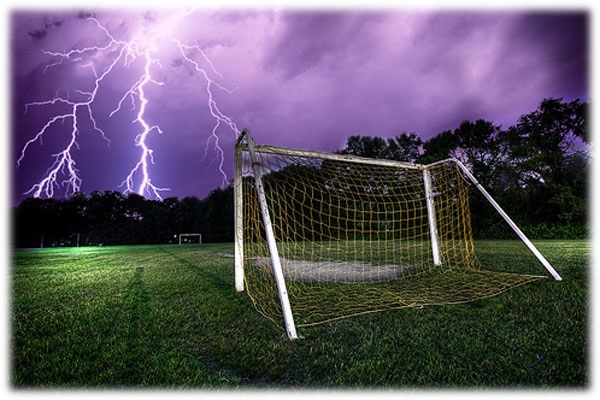WMUSA Thunder & Lightning Policy

-
Upon first detection of thunder or lightning , all involved in the activity must leave the field immediately and seek shelter in a hard-topped all-metal vehicle or a completely enclosed building – NOT under a tree, NOT in a carport, NOT in an open garage, NOT under a covered patio or pavilion, etc.
-
If the activity is not postponed to another day and will be continued after the thunder/lightning,you must stay sheltered until at least 30 minutes after hearing the last thunder or seeing the last lightening strike (whichever came last).
-
No one (coach, referee, WMU Administrator, etc.) has the authority to override this policy by allowing activities to continue after the first thunder is heard/lightning strike is seen or to allow people to return to the fields any sooner than the 30-minute minimum described above.
At HillTop, there is not enough space to shelter everyone (players, referees, spectators) in the clubhouse. Therefore, your primary shelter is a hard-topped all-metal vehicle (car, truck, van, etc.). Only those who don’t have access to such a vehicle should shelter in the clubhouse.
At practice fields, there is rarely access to a completely enclosed building. Therefore, you must shelter in a hard-topped all-metal vehicle; huddle all the people into the available vehicles to ensure everyone is safe, regardless of how tight it may be.
Why leave the fields if I only hear thunder but don’t see any lightning?
According to US Youth Soccer:
Each year, about 400 children and adults in the U.S. are struck by lightning while working outside, at sports events, on the beach, mountain climbing, mowing the lawn or during other outdoor activities. About 80 people are killed and several hundred more are left to cope with permanent disabilities. Many of these tragedies can be avoided. Finishing the game, getting a tan, or completing a work shift aren't worth death or crippling injury.
- All thunderstorms produce lightning and are dangerous. Lightning kills more people each year than tornadoes.
- Lightning often strikes as far as 10 miles away from any rainfall. Many deaths from lightning occur ahead of the storm because people try and wait to the last minute before seeking shelter.
- You are in danger from lightning if you can hear thunder. If you can hear thunder, lightning is close enough that it could strike your location at any moment.
- Lightning injuries can lead to permanent disabilities or death. On average, 20% of strike victims die; 70% of survivors suffer serious long term effects.
- Look for dark cloud bases and increasing wind. Every flash of lightning is dangerous, even the first. Head to safety before that first flash. If you hear thunder, head to safety!
Blue Skies and Lightning. Lightning can travel sideways for up to 10 miles. Even when the sky looks blue and clear, be cautious. If you hear thunder, take cover. At least 10% of lightning occurs without visible clouds in the sky.
Stay Safe!




